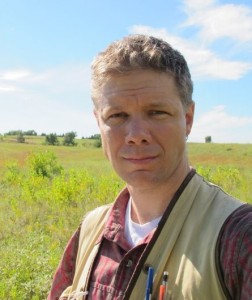January 14, 2013, Tom Ziemer, L&S News and Notes

Morgan Robertson did not consider working in geography until he traveled to Australia as a Fulbright Scholar in 1994. There, he researched fire ecology and management in the tropics of North Queensland, a region in the northeast of the country. The experience was enlightening enough that, upon returning stateside, Robertson decided to pursue an MA in geography from the University of Minnesota. He then came to UW-Madison to obtain his Ph.D. under the direction of professor of geography Matt Turner.
After stints at the Environmental Protection Agency, where he helped create new rules for the replacement of wetlands lost to development, and the University of Kentucky, he is excited to return to the Midwest as an assistant professor in the Department of Geography.
Welcome, Morgan! Tell us about your research interests.
I study the use of economic incentives in environmental policy, focusing particularly on the development of markets that are meant to achieve regulatory goals by selling new kinds of goods and services, such as carbon credits, wetland credits, and ecosystem services.
Why and how did you get into your field?
When I began working in environmental consulting, I was immediately struck by how low-quality most wetland restorations were, and I wanted to know more about how this part of environmental policy worked — it was clearly a problem combining both wetland science and the study of politics and policy. This led me into the then-emerging practice of “wetland banking,” markets in wetland credits that promised to solve many of the problems I had observed.
Why were you interested in returning to UW-Madison?
UW-Madison is one of the best places, if not the best place, to find cross-fertilization among environmental restoration, environmental policy, and environmental economics. The range of expertise in ecosystem services scholarship is immense and stellar. And as a Midwesterner, I am drawn to the landscapes and environmental problems of this region.
What courses will you teach?
I’m teaching an upper-division class on American Environmental Policy this semester, and I’ll be teaching our 100-level environmental issues course, our 339 Environmental Conservation course, as well as graduate seminars.
What can students expect in the classroom?
With all courses above the 100 level I try to incorporate something of a seminar approach. This isn’t always entirely possible, but I feel that at the university level students should engage with current literature and discuss it in a stewarded but not scripted way. I’m also very focused on writing quality — perhaps the best way to serve students is to teach them to be effective writers and communicators.
What’s your favorite spot on campus?
The Arboretum’s Greene Prairie and Grady Knoll.



